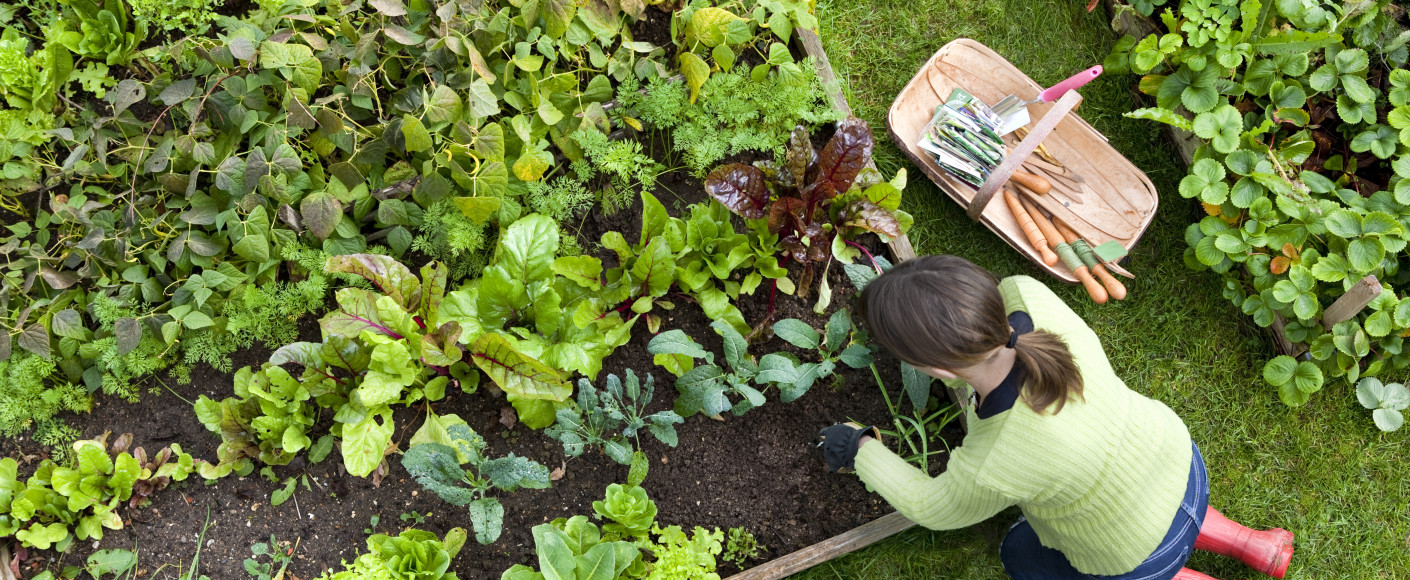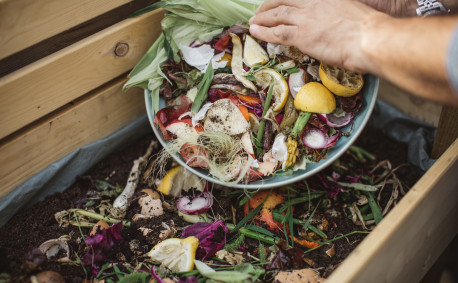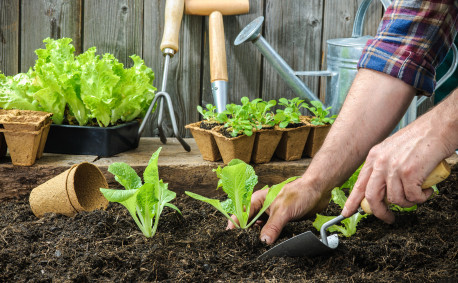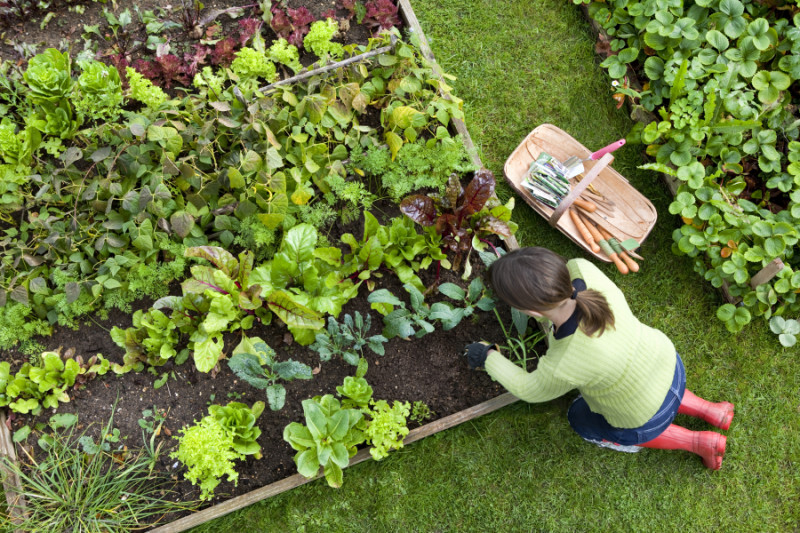Garden Beds for Beginners
Garden Beds for Beginners
So the time has come for you to stop dreaming about a home vegetable garden and get one growing — an undertaking that’s nearly as daunting as it is exciting. Questions pop up like weeds: Where to locate it? What to plant? But stop — step away from the tiller! You haven’t yet decided what type of garden you want.
The type of beds your garden will contain fall into two main categories: in-ground or raised. Each comes with its own pros and cons to weigh along with several key considerations that apply to you alone. That elaborate raised-bed setup you’ve been admiring in your neighbor’s yard may not be the best choice for you.
Can You Dig It?
If you have a level, well-drained piece of land with good soil, chances are you can simply hoe your rows directly into the ground, which can save loads of time, effort and money. Your site will have to be near a water source for easy watering, and away from trees so your veggies won’t have to compete for sun and soil nutrients. It doesn’t have to be completely exposed to the elements, though — a windbreak in the form of shrubs, fencing or a building is a big plus here in the plains.
What do we mean by “good soil?” Kansas State University Research and Extension (KSRE) lists fertile, sandy loam soil as the optimal vegetable-growing medium. While you’re unlikely to find this just below the surface at your site, chances are your existing soil will be ready to go once you till in some organic matter in the form of compost or manure. A soil test will tell you exactly what you’re working with and what amendments you need to add, and can clear up any contamination concerns you may have. Samples can be taken to your nearby extension office or mailed to a lab.
Incidentally, contamination concerns are one of the main selling points of in-ground beds. Your own soil is often a much safer bet than hauling in a truckload from who-knows-where to fill a raised bed. It’s vital to fully vet the content and origin of any soil you bring in!
Other benefits of in-ground beds include:
- They don’t require the construction or purchase of frames.
- They don’t need added topsoil.
- They need less water.
- They allow the assistance and efficiency of small machinery such as tillers, rather than requiring all the work to be done by hand.
- They’re easier to relocate if necessary.
- They make crop rotations easier.
- They allow you to grow a wider range of crops — corn and big spreaders like watermelons and pumpkins don’t work well in raised beds.
If ground-level gardening is what you choose, just be sure to establish dedicated paths for moving around the beds. The paths should be wide enough to push a wheelbarrow or mower through, and the beds should be kept to a width that allows you to reach the plants in the middle (usually about 4 feet). No walking or equipment anywhere but in those paths! Otherwise, you’ll compact the soil and completely thwart your efforts.
Raise the Roots!
There are a lot of variables in what constitutes a good in-ground garden site, so the fact that raised beds are enjoying equally raised popularity is no surprise.
Dennis Patton, a horticulture agent with KSRE, recommends raised beds as a workaround for those with subpar circumstances.
“It’s a great way to improve our typical Kansas soils that are heavy in clay and tend to be really wet and hold water when it rains, or hard as a rock when they’re dry,” Patton said.
If this describes your soil, or if your plot is uneven or riddled with rocks or roots that prevent digging, you’ll have no choice but to take the raised route. Of course, this is also the method of choice for city dwellers who have no soil at all.
Beyond necessity, people like raised beds for lots of reasons:
- More location flexibility
- No former ground cover to eliminate, and therefore less weeding
- More control over the soil quality (if you get it from a trusted source)
- Longer growing season due to a raised bed’s ability to soak up heat and drain well
- Easier access for gardeners with disabilities or other physical limitations
When it comes to raised beds, there’s a bumper crop of options to consider, ranging from simple mounds of earth to elevated boxes of varying sizes. Frames or containers made of wood are a popular choice, but there’s no single, “correct” way to construct these. And a little creativity goes a long way.
Gardening expert and author Barbara Pleasant came up with these inventive raised bed ideas that require little-to-no digging:
- Cover your site in bags of topsoil after slashing the bottoms to allow drainage. Then cut the tops off, water and plant.
- Make a frame out of brush (think “bird’s nest”) or straw bales and fill.
- Lay newspapers over the garden area, cover with dead leaves, then layer peat moss and compost over them — a method known as “lasagna gardening.”
- Build a compost pile, add soil and plant.
You can, of course, purchase your setup if you’d like. Typical raised beds are 4 feet wide by 8 feet long, though the length will vary by type of bed and your growing needs. To determine how much soil is needed to fill your bed to the required 8 inches deep, you can use a soil calculator.
Basic Bed Advice
Whatever your decision, there are a few best practices that are important to the well-being of any garden bed. Your new setup will need to be mulched well and monitored closely to ensure plants get the right amount of water. Add compost once a year and be sure to rotate your crops annually as well. And stay on top of weeding!
These tips and lots more are available in KSRE’s Kansas Garden Guide (PDF) and Raised Bed Gardening Guide (PDF).





